
"Breakdance": Breaking global cultural boundaries through dance
Culturally speaking, there has been a growing interest in hip-hop as a global phenomena, but oddly little mention of "Breakdance." It is not uncommon for music genres to get global exposure, but having a whole culture accepted globally is rare. In this article I will investigate the reasons behind breaking’s successful adoption on a global scale.
Often when we think of hip-hop in a global arena we tend to only think of one or two of its nine recognized elements, namely commercial rap and/or street fashion, which is often associated with misogyny and violence. In this article I will be addressing a more underground but equally global element of hip-hop culture, its most physical element called breaking or b-boying.
The name "breakdance" was later given to the artform by onlookers, giving the name a commercial aspect. Thus, to maintain political correctness, I will continue to adress the phenomena as "breaking." Other then being a unique acrobatic dance, breaking is a direct manifestation of the fundamental principles of hip-hop.
In researching breaking I will utilize Digital ethnography , as well as my own participatory observations as a b-boy, to further examine what components of breaking spread it to the global stage.
Breakdance: History, identity & community
tumblr_mt0mi6ddTu1sn8ziso9_640.jpg
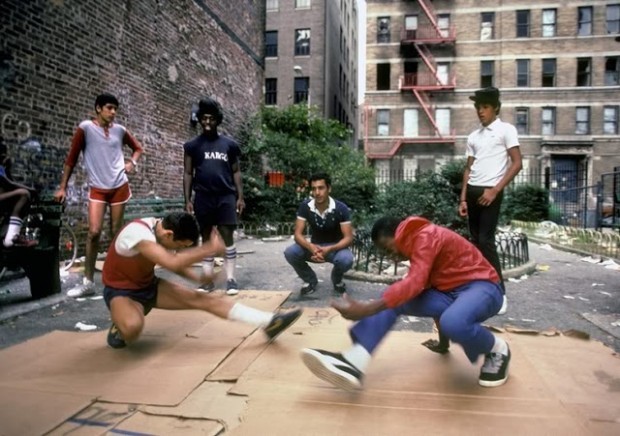
Early Breaking culture in the South Bronx
Breaking evolved as part of the hip-hop movement that came from African American and Latino youths.
“At the outset of the 1970s, with the city of New York deep in financial crisis, the Bronx was the scene of violent conflict between rival gangs. In 1971, however, the South Bronx gangs came together to sign a truce. Afrika Bambaataa, a young warlord from the Black Spade gang, emerged as a peacemaker. In 1975 he created his own organization, the Universal Zulu Nation, which brought together the four components of hip‐hop culture (DJing, MCing, Bboying and Graffiti)” (Lamotte, 2014).
Therefore, breaking was originally a means to cope with and resolve gang quarrels. The original b-boys and b-girls were youngsters living in hostile neighborhoods that danced at local park jams, at block parties, or in the streets. This urban solution for gang wars and the misconduct of idle youths, sets the tone for breaking’s open, competitive, creative and energetic nature.
The original b-boys and b-girls were youngsters living in hostile neighborhoods that danced at local park jams, at block parties, or in the streets. Consequently, Breaking became a source of identity construction and gave social status to youth in the ghetto. B-girl Roxy highlights how "Breaking saved her life" in a Facebook video, further showing how breakdance is an opportunity to redefine yourself from the ground up.
The original b-boys and b-girls were youngsters living in hostile neighborhoods that danced at local park jams, at block parties, or in the streets.
“Breaking crews (small units organizing social relationships within the subculture of Breaking) were forged with intercultural bonds, and battled in the streets to get respect. Alternative local identities were founded in fashions, language, street names and neighbourhood crews.” (Langnes & Fasting, 2016)
The crews themselves already had multi-generational, multi-cultural, international, and gender diverse components. Therefore, by self organizing into crews we see that breakers initiated themselves into the global stage locally.
”The Mighty Zulu Kingz was established in 1973. They were to be the official b-boy crew for the Zulu Nation….The current generation of MZK, the 4th generation, or “Generation 4″ came about on November 1, 2000. On this date, Afrika Bambaataa gave Alien Ness the task of bringing back the legendary name by putting together a group of dancers that will represent Zulu Kings, and this was to be done on a global scale unlike the previous generations who all resided in NYC solely” (Doing Your Daily Research, 2015).
With this initiative, Alien Ness formed the first b-boy crew that spanned the world, a concept that solidifies the hip-hop doctrine of peace, love unity and having fun.
”While knowledge about many elements of Hip-hop is primarily developed through television, radio, the internet and recordings, b-boying is almost always learned through personal interaction.” (Schloss, 2009)
In other words, participant observation is one of the main tools that breakers use to learn the craft. This local interaction with breaking is what gives it its uncanny and unique glocal attributes. One must actively pursue and engage with breaking in order for the breaking environment to engage back, therefore breaking is different everywhere it appears.
For instance, each student has a mentor from whom the torch is passed down, keeping the ancestral history of the movements alive through generational legacy. By engaging with breaking and adding your individuality, you contribute to the b-boy culture, its overall move repertoire and it’s history. Thus, by actively participating in the culture, you further help develop and become the culture.
“In the case of b-boying, these aesthetic lessons allow the dancers to define various aspects of their identity, develop strategies for integrating that identity into a larger social world, and then actually practice doing so. This is done in a variety of specific areas, including the choice of a name that expresses one’s b-boy or b-girl character, the clothing one wears, the way one carries oneself physically, how that attitude is reflected in the way one interacts with a given piece of music, improvisation, and the structure of the dance performance” (Schloss, 2009).
Battling: Breakdance Events
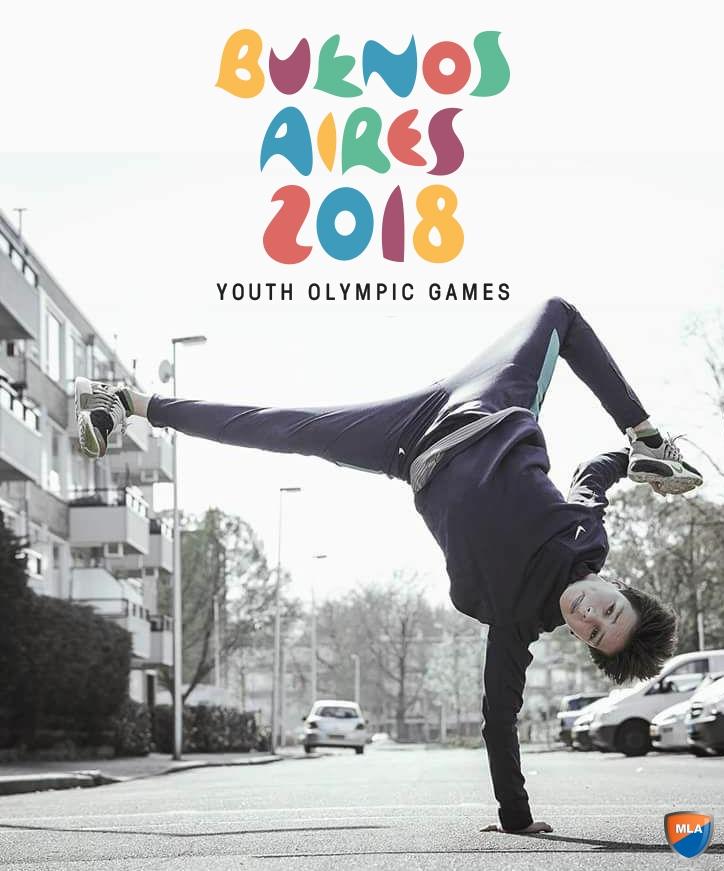
Poster of the 2018 Youth Olympics
In Schloss’s work, chapter six’s title “I Hate B-boys-That’s why I break” truly epitomizes the attitude with which this dance form evolved and developed. Schloss further elaborates:
”Part of being a b-boy or b-girl is to be able to deal with any situation that may arise on the dance floor. This ability is developed, tested, and proven in battle. In fact, battling and b-boying created eachother in their own image: Battling is the best venue for bboy style, and the best bboy style is that which is most suited for battling. ‘I think it’s the most important thing in b-boying,’ says b-boy Phantom”(Schloss, 2009).
”Through battle, b-boys and b-girls learn to use humble discipline as a foundation for creativity…. They attack without mercy yet still see their opponents as distinct and valuable human beings... Ultimately, battling teaches its disciples how to use style to reconcile opposing forces, a skill that may well be at the heart of Hip-hop itself” (Chang, 2006).
Here we see that the only qualification and valuation paradigm within the breaking community is that of battling and the direct demonstration of one’s style in the heat of the moment. This enables everyone to be able to participate to the degree to which the person’s skill set, creativity and style allow. Similarly, battles are an opportunity to learn and exchange with others, which causes socialization between people of completely different backgrounds.
Moreover, because the culture is so battle focused, local events are held to host these battles. If there are no local jams, b-boys will travel to the next town or city to compete and build a name for themselves. This started a migration trend of battle seeking, and the rise of bigger national and international events, such as Red Bull BC One (Worldwide), Battle of The Year (France), The Notorious IBE (The Netherlands), UK BBoy Championships (UK), R16 (Korea) ect.
In 2016 the International Olympic Committee(IOC) announced that in 2018, breaking would be a added to the Youth Olympic games. The first ever breaking Olympic medalists have already been announced. A CNN journalist covering this story said: “The IOC's decision is a clear sign that breakdancing -- and Hip-hop culture at large -- continues to go global” (Ellis, 2016). More recent still, in 2019 breaking was proposed to the IOC to be added to the 2024 Olympic games, along with surfing, climbing and skateboarding. This development is extremely groundbreaking, as this form of art has traveled through the slums of the world, eventually making it to the most renowned sport arena in the world.
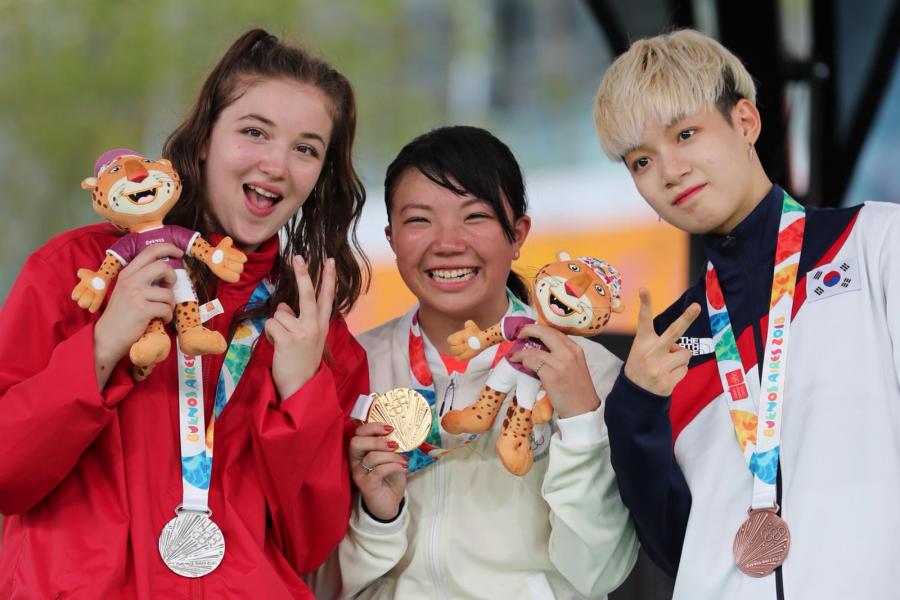
The Gold, Silver and Bronze medalist for B-girling at the 2018 Youth Olympics
Copyright
NoBiting.jpg
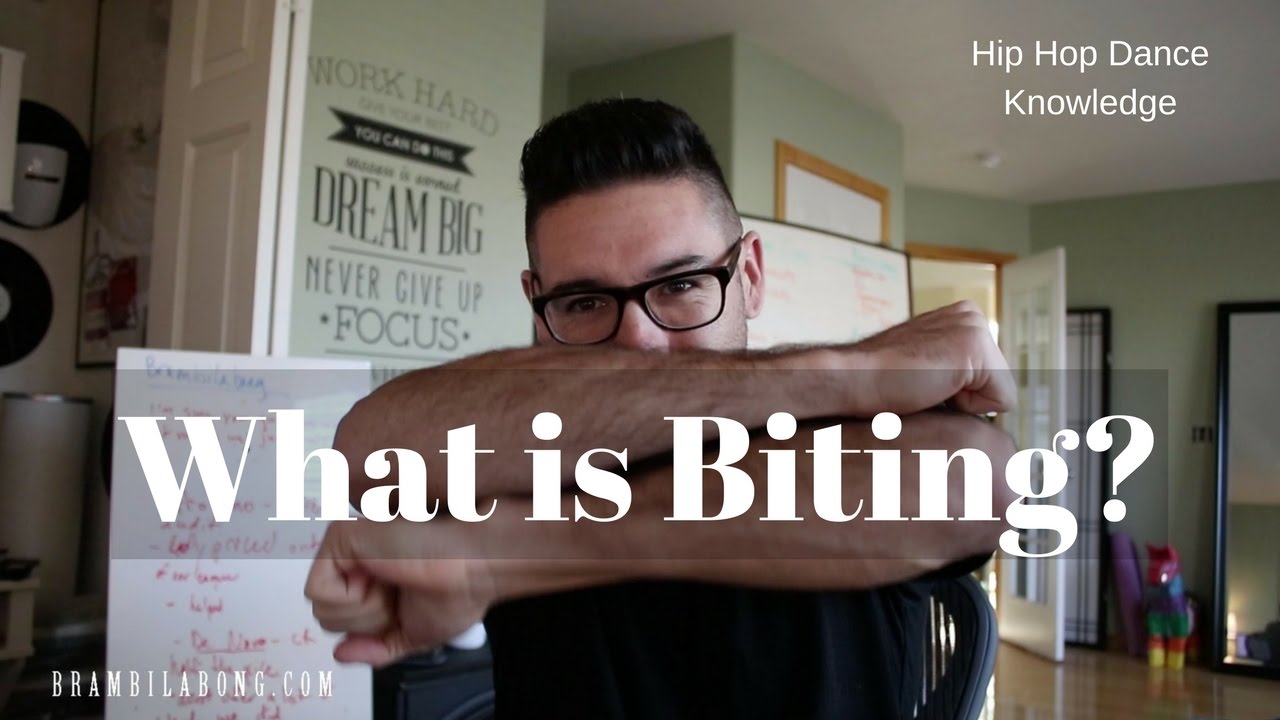
Hand sign for Biting/Coping: Utilizing forarms to represent jaws biting down
Individuality has a very important role in the core principles of hip-hop. Therefore stealing or “biting” moves is seen as disrespectful within the hip-hop and breaking scene. However not all forms of imitation are considered bad. The introduction to the foundations of the culture differs per person, so from the very start your journey as a b-boy is an individual one. Although fundamental movements will be shared between student and teacher, no standard route to mastery exists. Other instances of imitation will be judged by the community depending on how it answers a number of questions, such as:
Is there consent from the source? Is the source identified or easily identifiable? Is there an appearance of passing off? Is the imitation used as a springboard for the imitator's own creativity? Does the imitation enhance branding or accrue good will for the source? Does the imitation contribute to an overall conversation in the community/culture? (...) It is my contention that the Hip-hop community's view of imitation is at least partly grounded in notions of brand identity, brand building, and brand enhancement. Of course, honoring the creative enterprise is important as well, but ideas of author's rights and unfair competition are intertwined in judging imitation. (Anderson, H. 2011)
Thus, the no-biting principle not only promotes creativity, but further stimulates self-exploration and branding. This highly improvisational aspect of breaking gives it a very basic and personal entry level. It is not so much about learning the dance, as it is expression your version of the dance.
Media of exposure
bbwhd-450x305.jpg
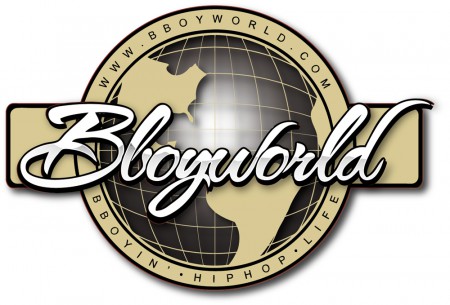
Bboy World Logo
Of course, media representation has had a major impact on breaking awareness worldwide. People started recording and marketing the moves of these dancers, resulting in the commercialization of the art form as well as the creation of movies like Wild style (1982), Style Wars (1983) and Beat Street (1984). This trend continued as crews like Rock Steady Crew started to get funding to shoot commercials. Suddenly, b-boying was no longer simply an urban thing, but it was projected through the television first nationally, then worldwide.
”In Scandinavia, the first noticeable impact of the Hip-hop culture was evident in 1984 with the dance movie Beat Street….By reconstructing images, clothing and bodily practices from the movie Beat Street, youth connected with each other through the Hip-hop culture as an imagined place, and breaking was used as a barrier against stigmatization.” (Langnes & Fasting, 2016).
Likewise, with the rise of the Internet and social media, new forms of interconnection emerged. B-boy World was one of them.
"In 1999 a few weeks after B-Boy World was launched, the Platform grew into a Community of 25,000 Members Worldwide. This was the First International Community Platform were Dancers, DJ’s, Promoters and other Artists could interact with each other, exchange information, and share videos. This innovation of Communication was so Revolutionary that it created a whole new way of promoting and experiencing culture. For the first time in History, a person from Japan could connect with somebody in the USA in real time.” (B-Boy World, 2018)
Again, it was B-Boy World that made international events like UK b-boy championships recognizable worldwide, forcing an international b-boy discourse to emerge.
YouTube was the single most revolutionary technological addition to the breakdancing community.
From my own participatory observation, I would conclude that YouTube was the single most revolutionary technological addition to the breakdancing community. This is due to YouTube’s “prosumption” attributes. Thus, b-boys locally started consuming recordings from the global b-boy community. Likewise, by posting new videos of their own breaking experiences, battles, tutorials, interviews, and philosophies, they would help make a name for themself as well as automatically educate the culture on how the dance is experienced and expressed in their location.
What can we learn from Breaking?
B-boying is an urban strategy to cope with difficult situations, it brings empowerment in times of inequality, and can be seen as an extension and reflection of a person’s identity. This strategy is sustained by a community that identifies as multicultural and inclusive from the beginning, breaking down hierarchic forms of oppression everywhere it is found. The creation of opportunity from battling, performing and recording for commercials also opened up avenues for many. Battling, a crucial part of the culture, is responsible for the travel of many people, techniques and philosophies. This competitive nature of breaking made it an open arena that started to appear glocally. The process of learning, battling, reflecting and teaching, is how the culture is passed on through generations and spread across the world.
The competitive nature of Breaking made it an open arena that started to appear glocally.
In addition, the emphasis on copyright, originality and individuality further promotes the creation of local/personal expressions of b-boying, worldwide. The breaking community lives off of innovation and contribution, and therefore simply being yourself within the framework of breaker is the only real criteria. Finally, the media helped promote b-boy culture to the world, in the form of video recordings that were distributed via commercials, movies, and social media platforms. This made it possible for remote areas to develop their own b-boy community, without any physical contact from a foreign b-boy.
In closing, breaking became a global phenomena due to its capacity to transmute misfortune, its promotion of self-expression and its environment of community and comradery. With its competitive element, breaking also becomes a catalyst for personal growth and constant self-reflection. This on an individual level has a lot of benefits to all members of society, especially disenfranchised peoples, making it easier for the trend to travel from one urban area to another. Lastly, apart from breaking’s innate appeal to our inner artist, its aesthetic presence within modern forms of media was the final drop that opened up all international borders. B-boying, b-girling or simply breaking was no longer a South Bronx gang violence mediator, but rather a a global call to self-actualization and self-representation through dance.
References
Encyclopedia Britannica. Break dancing | dance [online]
Schloss, J. (2009) Foundation: B-boys, B-girls, and Hip-hop Culture in New York. Oxford University Press USA [Online]
Lamotte, M. (2014) Rebels Without a Pause: Hip-Hop and resistance in the city. International Journal of Urban and regional Research [Online]
Anderson, H (2011) No Bitin’ Allowed: A Hip-Hop Copying Paradigm for All of Us. Pace law Faculty Publications [Online]
Chang, J. (2006) Total Chaos: The Art and Aesthetics of Hip-hop. Perseus Books Group [Online]
Langnes, T. Fasting, K. (2016) Identity constructions among breakdancers. Review for the Sociology of Sports [Online]
BBC Three(2017) Like A Girl: B-Girl Roxy [Facebook post]
Bboy World(2018) Our History [Facebook about page]
Doing Your Daily Research (2015) History of the Mighty Zulu Kingz. [Facebook post]
Ellis, R. (2016). Breakdancing added to Youth Olympic Games. CNN [online] .